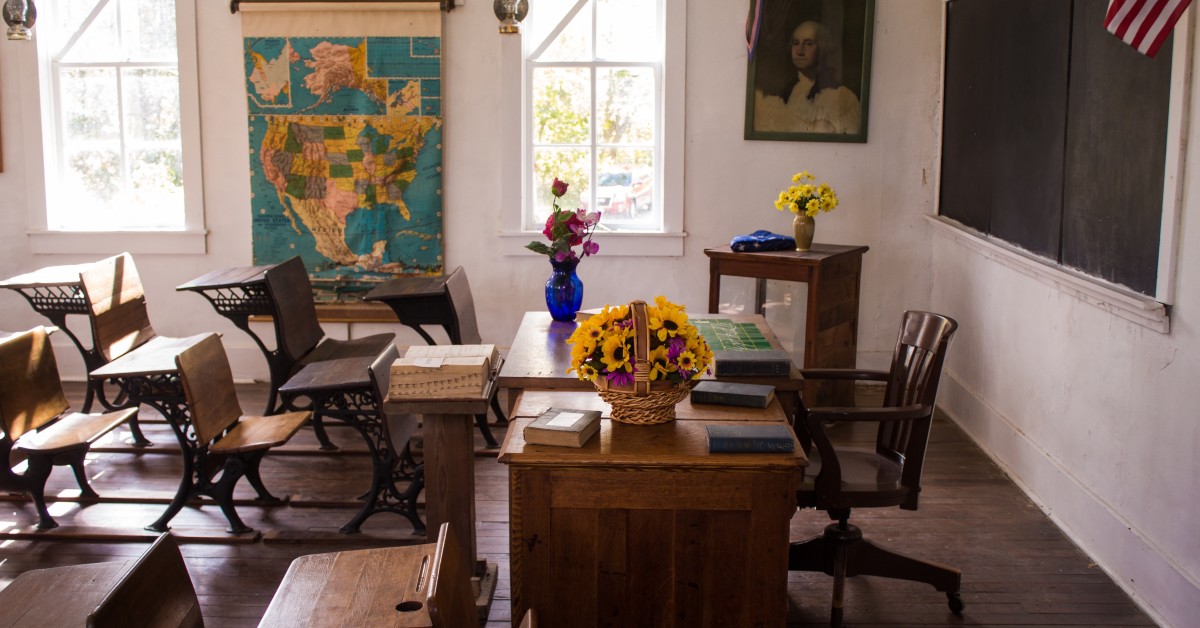
What Do Math Teachers Earn in 2020?
As a math teacher, you may qualify for higher pay [...]

School choice has been in and out of the headlines for years. Today, parents can choose from an array of options that include public schools, private schools, religious schools, and homeschooling.
Charter schools are yet another option—one that families and teachers alike sometimes find confusing. That’s because charter schools are privately run but publicly funded—they are public schools, but different. Some people call them ‘independent public schools’ because they’re not bound by statutes, rules, and regulations surrounding budget management, staffing, schedules, and curricula that govern traditional public schools.
Teachers who crave more freedom in the classroom may find charter schools an attractive option. Charter school instructors can accommodate diverse learning styles, explore different curricula, incorporate student interests or even their own interests into lesson plans, and teach in a way that gels with their educational philosophies. Unfortunately, there are far fewer charter schools than there are public schools. Also, not all charter schools do as much to foster educational innovation as you might assume.
That means a charter school might be the best fit for you (assuming you can find an open position). However, you might also discover that the charter schools in your area aren’t as groundbreaking as advertised. Before you commit to the idea of becoming a teacher in a charter, be sure you understand not only what makes teaching in a charter school different but also what your local charter schools are like.
In this article about teaching in a charter school, we cover:
Charter schools are elementary schools, middle schools, and high schools that are independently operated. They are paid for, in part, with public funds. They are technically part of public school districts, but only because they have agreements (or charters) with those districts that allow them to operate.
According to the Education Commission of the States, charters detail “how the school will be organized and managed, what students will be expected to achieve, and how success will be measured. Many charters are exempt from a variety of laws and regulations affecting other public schools if they continue to meet the terms of their charters.” In general, charter schools also have to meet the same student achievement benchmarks as public schools. Unlike public schools, charter schools can be shut down if they fail to meet those benchmarks.
The first public charter schools were founded in Minnesota in the early 1990s to test new educational approaches before integrating them into the wider school system. The goal of the early charter school movement was to improve education for all students.
However, as charter schools proliferated around the United States, many different kinds of charter school models have emerged. There are, for instance, charter schools that cater to students interested in a particular subject area. Some develop curricula focused on scientific concepts, while others prioritize visual and performing arts, like the Renaissance Arts Academy in Los Angeles, CA. There are charter schools that fill a niche left open by the closure of vocational schools and charter schools that cater to gifted students.
| University and Program Name | Learn More |
|
New York University:
Master of Arts in Teaching
|
|
|
Merrimack College:
Master of Education in Teacher Education
|
Each charter school can set its own educational and professional requirements for teachers, but the 45 states with charter school laws set their own charter school teacher requirements when it comes to licensure. Some (like California and Florida) require teachers at charter schools to meet the same licensure requirements as public school teachers. Others (like Texas and Arizona) don’t require charter schools to hire teachers with state credentials. Many states have rules on the books related to what percentage of teachers can be unlicensed and the criteria unlicensed teachers must meet.
In Missouri, for example, up to 20 percent of full-time teachers can be uncertified. However, all hires must have teaching experience, training, and skills appropriate to the teacher’s duties. Uncertified teachers also have to be supervised by licensed teachers. In New Hampshire, at least 50 percent of a charter school’s teaching staff must hold a license or have at least three years of classroom experience.
The guidelines are usually straightforward, but sometimes the rules are more complicated. In New York, up to 30 percent of teaching faculty or five teachers (whichever is smaller) can be unlicensed. Still, those teachers usually need three years of classroom experience, two years of Teach for America experience, or tenure at a college or university. However, unlicensed teachers with exceptional business, professional, artistic, athletic, or military experience may be hired even if they don’t meet those requirements. A school can have an additional five unlicensed mathematics, science, computer science, technology, or vocational tech teachers and another five with notable credentials.
The Education Commission of the States has a great breakdown of charter school requirements for teachers by state department of education
This question is tough to answer because your experiences teaching in a charter school will depend on the school you work for and the grade level you teach. There are more charter schools in urban areas, but you might land a teaching job at a charter school in a suburban or rural area.
People often assume that charter schools have smaller class sizes, but this isn’t always the case. Fewer students attend charter schools in the US, but that doesn’t mean fewer students attend each school.
What charter schools usually have in common is a strong educational philosophy, so it’s essential that you believe in the mission of the school you work for. New charter schools are usually not unionized. As a result—plus the fact that charter schools can be closed for various reasons—teachers in charter schools don’t have the same job security as teachers in public schools, who often have union backing.
There are plenty of perks that charter school teachers enjoy, however. Because charter schools can’t always offer teachers higher salaries (more on this below), they often provide new hires extra professional development opportunities, flexible leave options, and other non-salary benefits. More importantly, charter school teachers usually have more freedom when designing lessons.
“My school believes in teaching the kids what they need to know by any means necessary,” writes one We Are Teachers contributor who teaches seventh grade English at an urban charter school. “That means that if I want to spend a couple of weeks working with my English class on the fundamentals of power tools, I can do it. If another teacher decides to replace all her desks with exercise equipment, great… Our kids experience a huge variety of teaching styles and activities every day, and I think that works to their benefit. I know it makes me happier as a teacher.”
You’ll probably also work longer school days when you teach in a public charter school (or even a more extended school year). That may be because your school hours differ from the district’s schedule or because part of your job involves overseeing after-school extracurricular activities.
Charter school teachers do not typically earn more than their colleagues in public schools—and when they do, they usually work more days, put in longer days, and don’t see the kinds of regular raises that public school teachers do. Many charter school teachers earn significantly less than their public school colleagues and still work longer hours.
In some cases, charter school teachers don’t pay union fees, and some spend less of their money on classroom supplies, counterbalancing their lower salaries somewhat. Still, those savings can’t make up for salaries that are 10 to 15 percent lower on average. Additionally, charter school teachers don’t usually enjoy the robust health benefits or retirement options that public school teachers get. Don’t let that scare you off, though. Charter school teachers report feeling more valued and having more control over what and how they teach. You may not earn more when teaching in a charter school, but you might enjoy your job more.
Looking at the upsides and downsides can help you decide whether you’ll thrive in a charter school.
Charter schools were launched to test innovative educational approaches before implementing them in public school districts. However, today many critics claim that charter schools hurt rather than help public education.
One criticism is that the proliferation of charter schools has led to private corporations and entrepreneurs opening for-profit schools that do little to drive innovation. Critics also say some charter schools hire inexperienced teachers to keep costs low and profits up and require those teachers to prioritize standardized test scores over education quality. The fact that charter schools in some districts can cherry-pick students has also garnered criticism from those who believe that the proliferation of charter schools could lead to a two-tiered public education system. However, the most common complaint about charter schools is that they hurt public schools by reducing available funds. In many districts, schools lose money every time a student transitions into a charter school.
However, it’s critical to realize that it’s nearly impossible to generalize about charter schools because charter rules vary so widely. While there are certainly some bad apples out there, there are also plenty of fantastic charter schools where teachers can flex their creativity and explore teaching methodologies that don’t fit into the public school model. In most charter schools, a commitment to giving students the best possible education guides administrators and educators’ decisions.
The most important thing you can do before deciding whether to look for positions in charter schools is your research. Look into how charter schools and public schools differ in your area. Charter schools may not be the revolution in education they’re often described as, but your local charter school may be where you will be able to make the most significant impact.
This article was originally published in 2018. It has been updated to reflect the most recent data on the subject.
(Last Updated on February 26, 2024)
Questions or feedback? Email editor@noodle.com

As a math teacher, you may qualify for higher pay [...]

Washington, DC-based teacher residency programs offer the opportunity to earn [...]

Admissions requirements for teacher residency programs are similar to those [...]

Today's top educational researchers strive to make learning available and [...]

A master's in education administration can help you ascend the [...]
Categorized as: Teaching, Education & Teaching